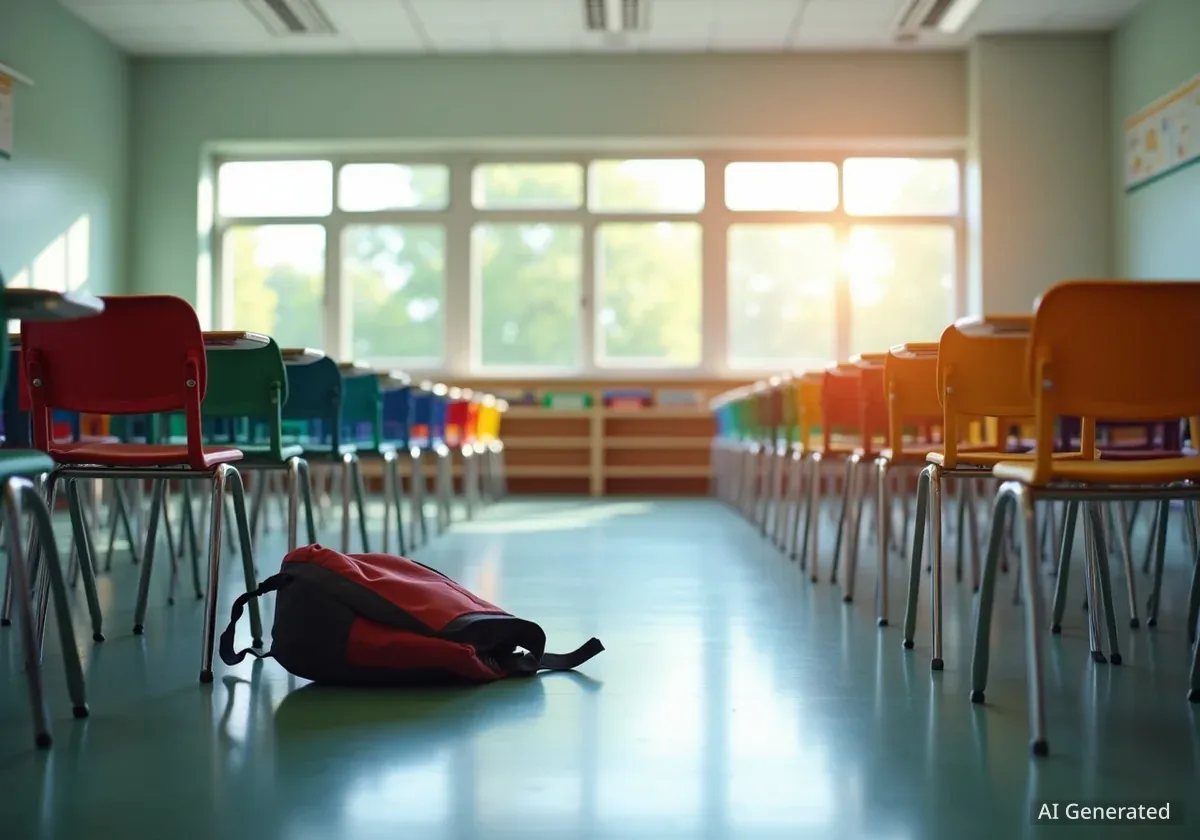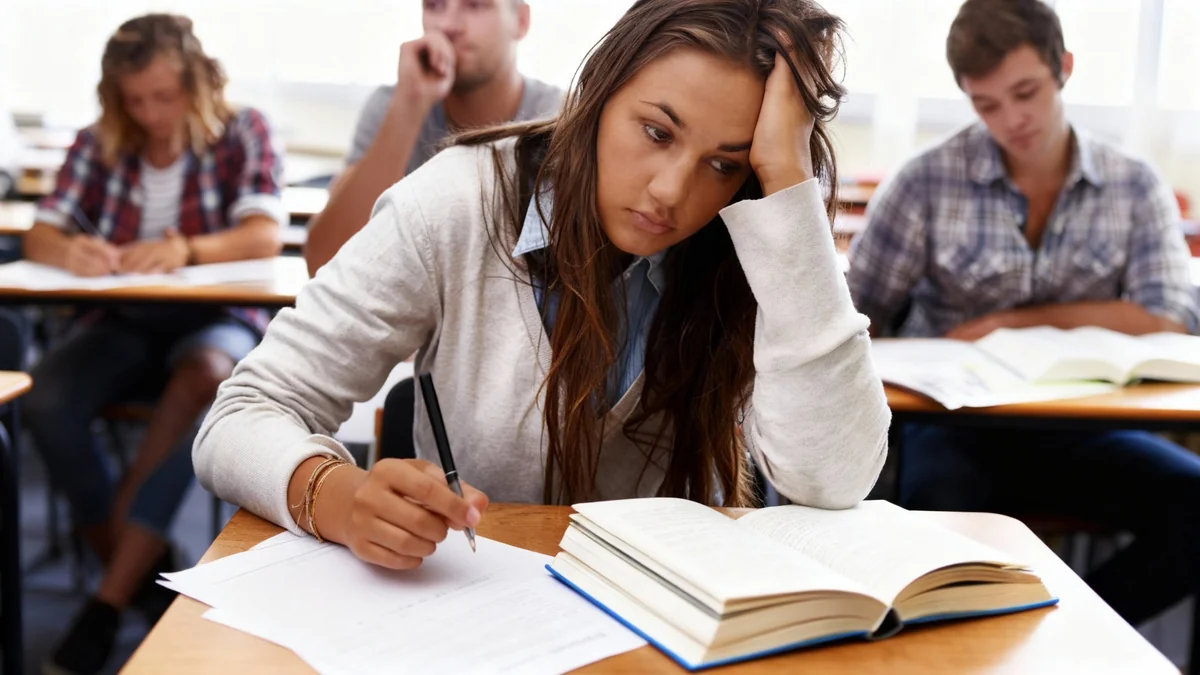The Mississippi Department of Education (MDE) has released new data showing a significant increase in chronic absenteeism across the state's schools. For the 2023-2024 school year, the rate of students frequently missing school rose by nearly 28%, affecting over 120,000 students and creating challenges for educators and communities.
This rise brings the statewide chronic absenteeism rate to 24.4%, meaning nearly one in four students missed a substantial amount of instructional time. State officials and local residents are expressing growing concern over the long-term impact on student learning and community safety.
Key Takeaways
- Significant Increase: Chronic absenteeism in Mississippi schools increased by nearly 28% during the 2023-2024 school year.
- Statewide Rate: The current chronic absenteeism rate stands at 24.4%, impacting more than 120,000 students.
- Official Definition: A student is considered chronically absent if they miss 10% or more of the school year, which equates to at least 18 days.
- Official Concern: State Superintendent Dr. Lance Evans highlighted the loss of valuable instruction and social interaction for absent students.
Understanding the Data on Student Absences
The latest figures from the Mississippi Department of Education paint a clear picture of a persistent challenge for the state's K-12 system. The reported 24.4% chronic absenteeism rate for the 2023-2024 school year marks a substantial jump from the prior year and continues a trend that has concerned educators since the COVID-19 pandemic disrupted regular school routines.
Chronic absenteeism is a specific metric used by education departments nationwide. It is not about a few missed days but a pattern of persistent absence that research shows can severely hinder a student's academic progress. The threshold is set at missing 10% of instructional days, for any reason, including excused and unexcused absences.
By the Numbers
In a standard 180-day school year, a student who misses just two days per month would be classified as chronically absent. This seemingly small number of absences quickly accumulates, leading to significant learning gaps over time.
The data reveals that more than 120,000 Mississippi students fell into this category last year. This large number underscores the scale of the issue, which extends beyond individual students to affect entire classrooms and schools as teachers must divert time to help absent students catch up.
The Educational and Social Impact
State officials emphasize that regular attendance is fundamental to student success. When students are not in the classroom, they miss more than just lessons; they lose opportunities for social development and engagement with their peers.
"When students are not in school, they are missing valuable instruction from their teachers and social interaction with their peers," stated Dr. Lance Evans, the State Superintendent of Education.
This loss of direct instruction can lead to lower academic performance, reduced reading proficiency, and a higher likelihood of dropping out in later years. The social aspect is equally critical. School is a primary environment where children learn to collaborate, resolve conflicts, and build relationships—skills that are essential for their future.
The problem is not isolated to academic settings. The MDE's report has sparked conversations among residents about the broader community impact, with some connecting unsupervised youth to potential safety concerns.
Community Perspectives on the Issue
Parents and residents in communities like Jackson have voiced their worries about the consequences of students being out of school. Their concerns often link absenteeism to a lack of supervision and the potential for negative behavior.
"I think they should be in school so they won't be getting into trouble, riding around breaking into their houses and stealing cars," said David Yates, a Jackson resident, highlighting a common fear in the community.
Other parents pointed toward the role of family in ensuring children attend school. Latarsha Brown, a parent, stated her belief in the importance of parental responsibility. "My kids go to school every day... I feel like these parents should be a parent, get themselves together and put their kids in school or get their kids some learning," she said.
A Post-Pandemic Challenge
School districts across the United States have struggled with rising absenteeism since 2020. The pandemic disrupted attendance habits, altered family routines, and increased student anxiety and health concerns, all of which contribute to the ongoing challenge of getting students back into the classroom consistently.
The sentiment of holding parents accountable was echoed by another parent, Natasha Evans. "I think parents should, you know, be held accountable for their kids not being in school, because if they're not in school, and they're not at work, then, of course, that leaves room for them to get into all kind of things," she explained.
Addressing the Rise in Absenteeism
In response to the data, the Mississippi Department of Education is urging school districts to take proactive steps. The department's official guidance encourages districts to actively promote regular school attendance among students and their families.
Furthermore, the MDE has stressed the need to re-engage students when their absences begin to accumulate. This approach moves away from purely punitive measures and toward more supportive interventions. Potential strategies for districts could include:
- Early identification of students with attendance issues.
- Increased communication between schools and families.
- Connecting families with community resources to address underlying issues like transportation, health, or housing instability.
- Mentorship programs to help students feel more connected to their school community.
The goal is to understand the root causes of why students are missing school and provide targeted support to overcome those barriers. State education leaders acknowledge that reversing this trend will require a coordinated effort involving schools, families, and community partners working together to emphasize the importance of being present in the classroom every day.





